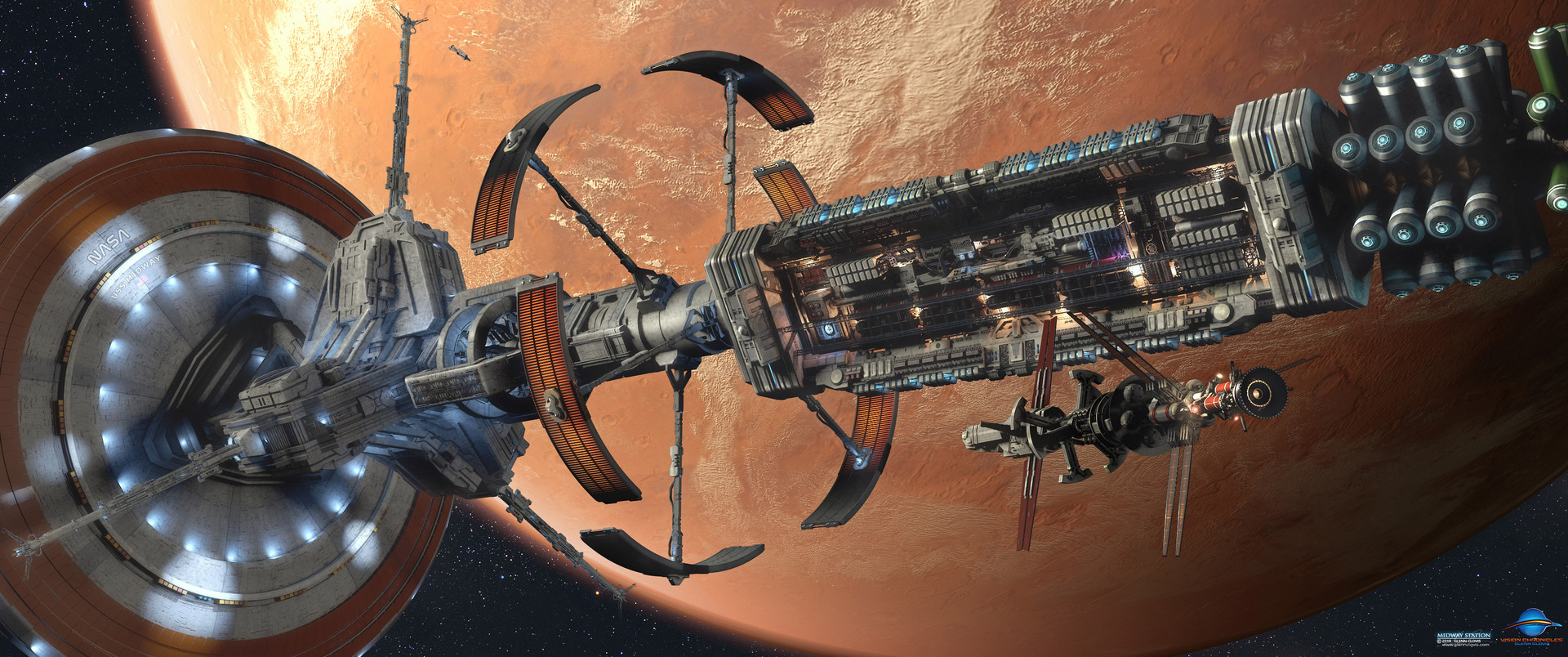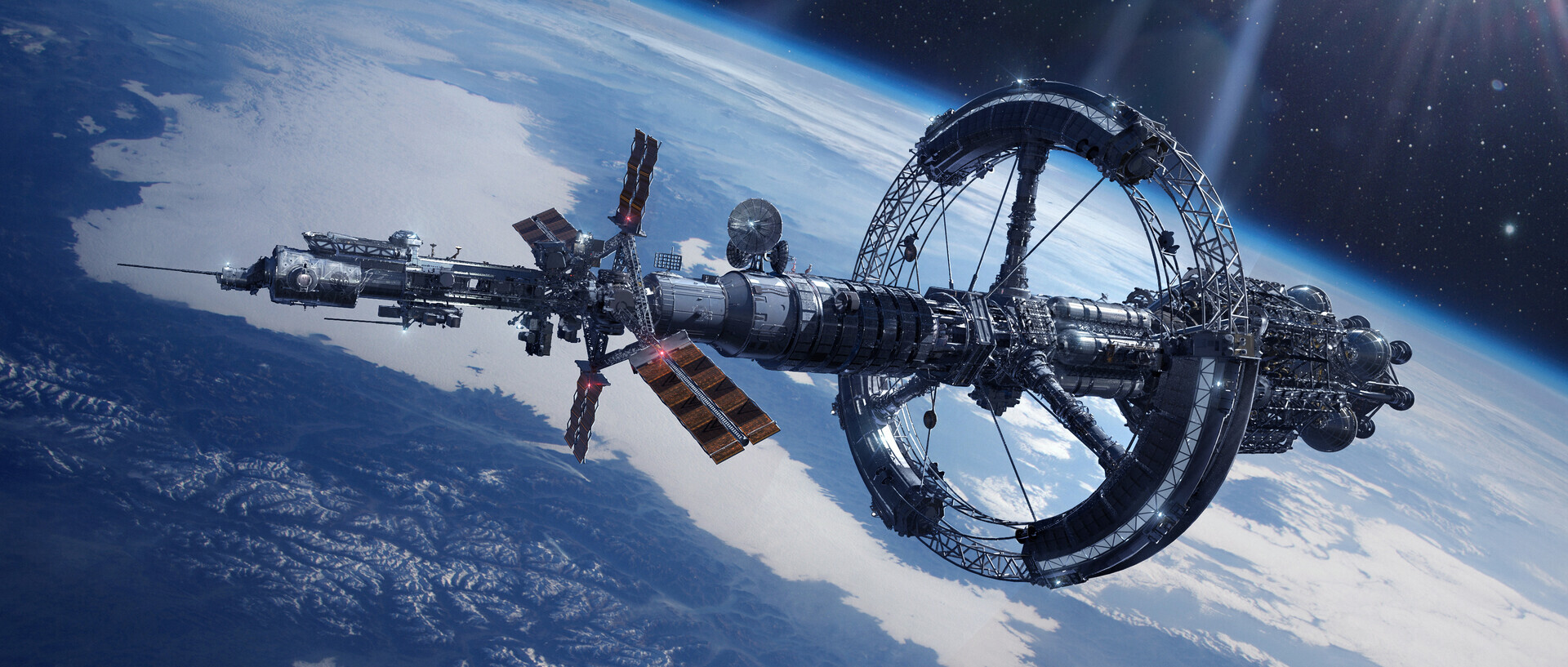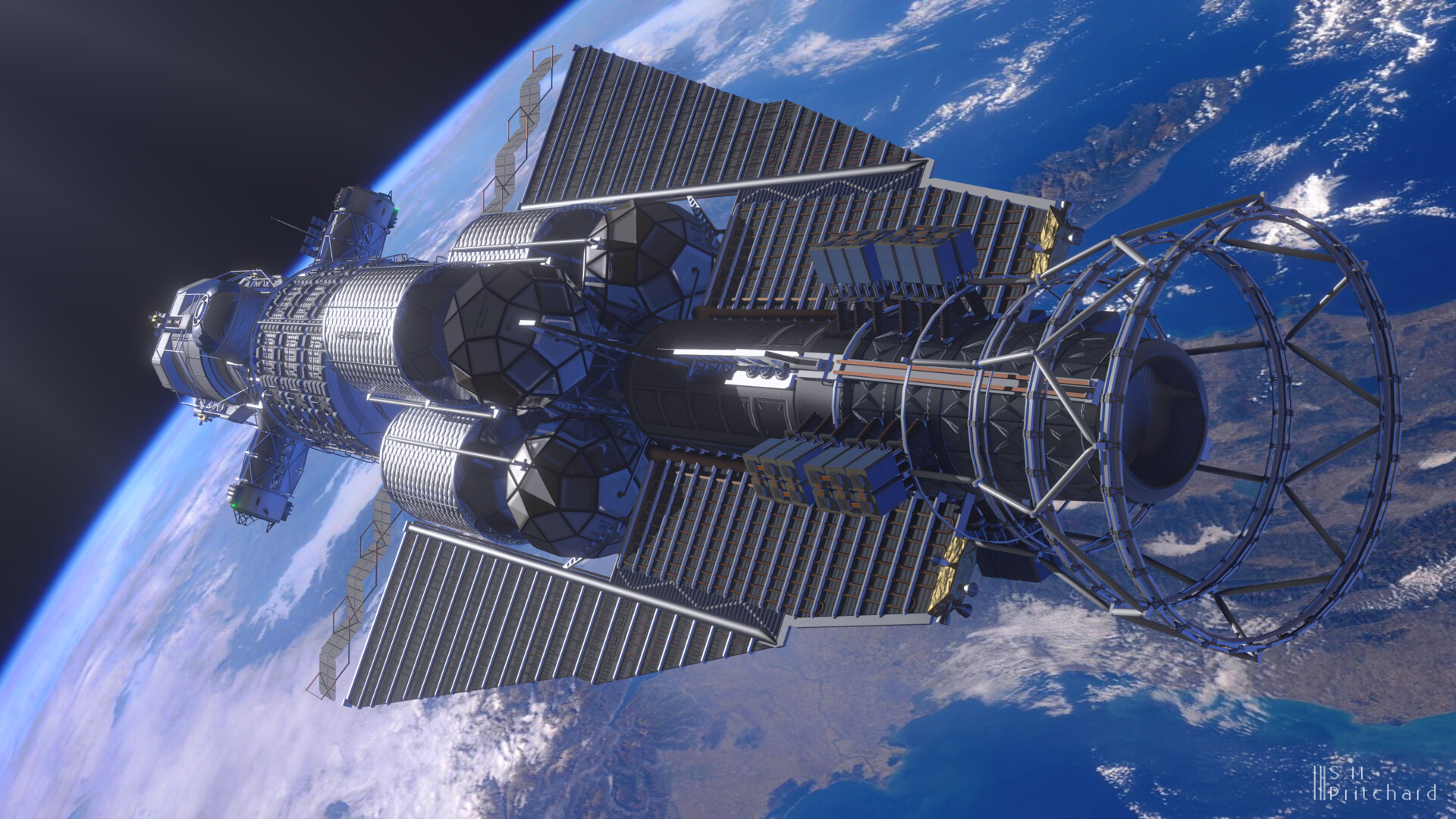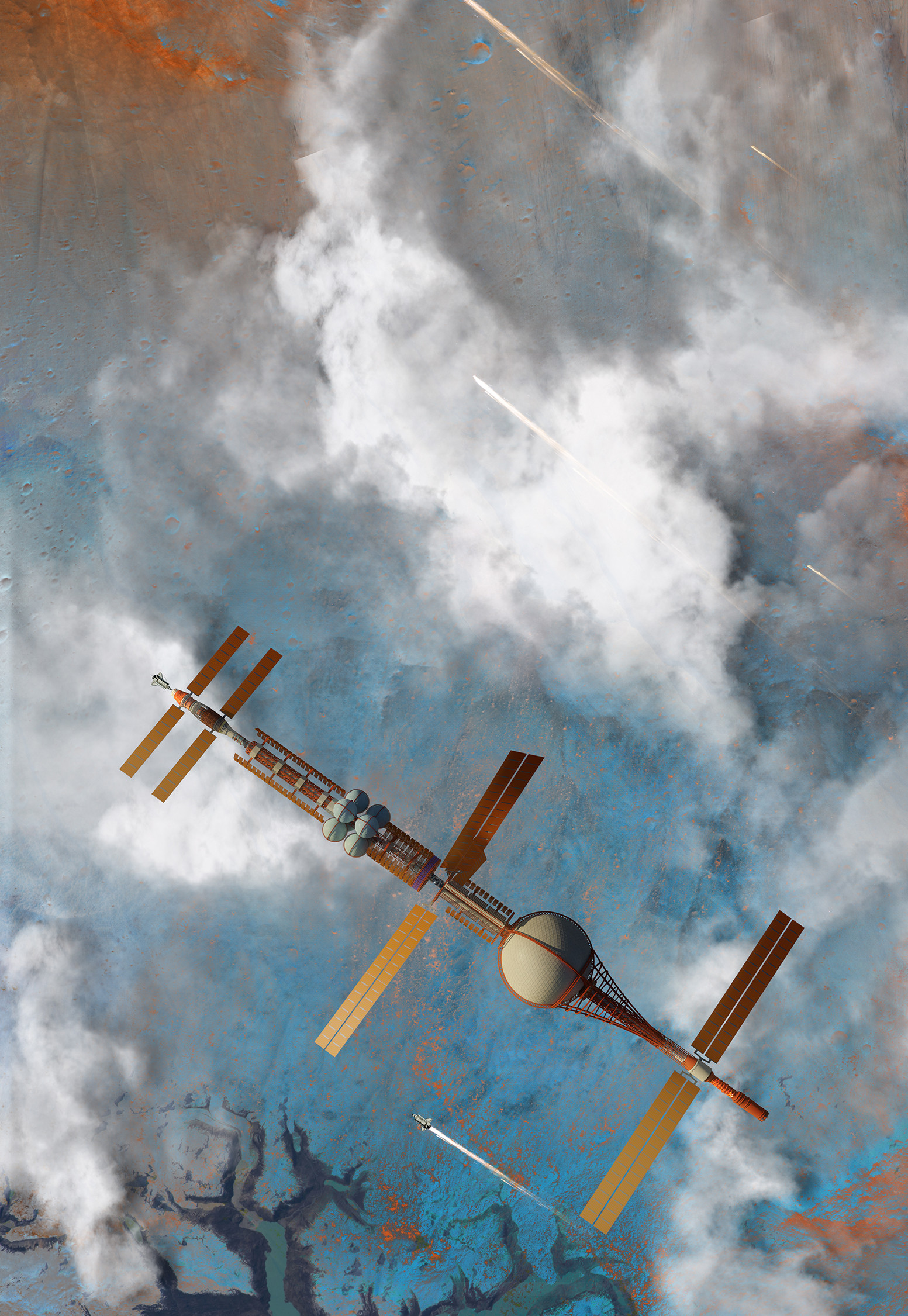This post is brought to you by Dan, RimWorld and NewSovietWave.
I started writing a post last year that I never ended up publishing which was intended to be a review of sort for Mothership, from Tuesday Knight Games. My review is as follows:
Mothership is pretty great.
Normal service will now resume.
 |
| Glenn Clovis |
I ran a small adventure for some friends of mine using the core rules in the Mothership Player's Survival Guide not long after picking it up. It was fairly simple - the PCs were passengers on a ship who awoke from cryosleep to find the vessel stranded in a system's Oort cloud with the laws of physics behaving weirdly, the crew having gradually been driven insane and consumed by an energy-vampire entity that lived in interstellar space mostly interacting with dark matter. They loved it, and most of them even survived! Since then I've been thinking about it on-and-off and have a few ideas about a general setting.
The below is mostly predicated on the existence of non-relativistic Faster-Than-Light and the theory of the mind as essentially non-computable. I've got a few ideas for a subsequent post where FTL travel incurs serious time-debt and Dan has some excellent stuff on digital posthumanity (it's great, go read his blog).
When?
Some time in the mid-late 22nd century. The exact date doesn't matter a whole bunch for a few reasons:
- Mothership is a pretty lethal system and having a vague idea of time works easier for me to drop a new party into rather than strictly defined chronology.
- FTL travel, while not strictly relativistic, has its vagaries with regards to the passage of time for both travellers and observers.
- FTL communication isn't possible - information travels at the speed of the fastest ship - leading to a large information timelag the further across space one travels.
Time is still generally tracked on a 24 hour day ((Earth) Standard Day) and 365 day year ((Earth) Standard Year) largely out of inertia, but decimal time is also popular on starships. Extrasolar residents will usually keep a parallel Local time system.
Where?
Human space is laid out in three rough concentric spheres centred around the Sol system, comprising a diameter of ~300 parsecs (Rigel here we come!):
The Core sphere
The space occupied by the initial extrasolar colonisation efforts and, thus, the oldest and most developed worlds. Travel time between these systems is reasonably quick and the relative speed of information and travel results in the Core largely existing under the iron fist of UN Intersolar Authority (UNISA) with centralised government (read: corporate) structures, component standardisation and elements of cosmopolitanism. Also the region of space that bore the brunt of the PERIMETER Crisis - the Sol system is still cut off from hyperspace. You can get from one side of the Core to the other in about 3 months in a Jump 4 ship.
The Outer sphere
The space colonised by the second wave of Terran efforts. The UNISA still holds authority here though their structure is necessarily decentralised given the less well-established hyperspace routes and distance from their Core strongholds. As such nominally independent 'sovereign system' polities have emerged - this process has accelerated in the wake of the PERIMETER Crisis as requisitions and taxes have been levied by colonial authorities to assist in Core reconstruction efforts, sparking brushfire wars and insurgencies. Travelling from the edge of the Core to the boundary of the Outer sphere takes about 6 months at Jump 4.
The Rim
The far frontier holding the furthest documented human colonies in the Milky Way. Hyperspace travel is still risky and unpredictable here and the authority of the UNISAis virtually unrecognised and grows weaker every day. Cult leaders, political dissidents, corporate prospectors and more congregate at the fringes of human space and society. To travel from the edge of the Outer sphere to the loose boundary of the Rim takes around 9 months at Jump 4.
The Beyond
Non-colonised (officially) space past the boundary of the Rim.
Who?
Most of us could be transported into this setting and not notice much different about our descendants, but it depends where you look - metahumanity is emerging:
Mind-machine neural interfaces have allowed for advanced cybernetic implantations - cosmetic implants, heads-up displays, fully-immersive VR, truly integrated synthetic limbs & organs, implanted or wearable-wirelessly-linked eidetic memory storage, full cyborg-isation (humanoid or otherwise), and more, are available. Some corporate employment contracts are more akin to cybernetic mortgage clauses.
Genetic engineering has improved to the point where genetic illness has largely been eliminated and resistance to many diseases can be conferred (if you've the cash to pay for treatment). Changes can be made to the human genome to aid in colonising extrasolar or void environments - adaptations for low- and high-G environments or low-light, aquatic, or low-oxygen planets, for instance. Somatic (non-heritable) genetic augmentation can be made without too many problems in advanced medical settings (although requiring appropriate therapy while the changes take effect). Germline heritability, however, is heavily scrutinised by the UNISA. The mega-rich Core families have surreptitiously begun the gradual process of marshalling their familial genes into that of a genetic over-class and colony worlds in the Outer sphere and Rim have begun the slow path to true speciation as their citizens choose to adapt further to non-Terran environments. Transgenic changes have been made to Terran bacteria, animals and plants to aid in colony establishment in extrasolar environments.
Further to the above improvements in the human genome via gene editing and subsequent augmentation are able to confer increased longevity, extending the lifespan of a Core world citizen almost indefinitely. Outer sphere and Rim residents see this as paltry compensation for having to live in the Core.
Human tissue cloning is widely used but regulations against reproductive cloning or full-body recreation exist in UN space, and among many independent polities. Elsewhere it's a free for all, but the immortal holy grail of mind-transfer remains thoroughly out of reach.
Mind digitization remains elusive - the data requirements are immensely prohibitive and even where this has been surpassed the recreated digital minds quickly degrade into a roiling mass of insanity for lack of biofeedback from the brain's physical structures. The future remains, in this instance, meatbound. An exception of sorts exists in the use of neuronal network data to act as 'seeds' for artificial intelligences.
Truly artificial intelligences, on the other hand, do exist in strong and weak varieties. These are strictly regulated.
Alien ruins and artefacts have been found but mankind has thus far encountered no 'intelligent' life among the stars. Microbial and even complex organisms are present, though rare, so the lack of intelligent life has promoted huge discussions around the Great Filter and what lies in wait for humanity.
 |
| 3AAA |
How?
What are the tools by which humanity has cemented its place in the stars? I'll dig into this in a subsequent post, but general details below:
Jump drives are the lynchpin of humanity's spread through interstellar space. Whereas travelling under conventional power, even at relativistic speeds, would take years to cross even minor interstellar distances (not even getting into the time debt of the crew) Jump-capable ships can cross these distances in a fraction of the time. A Jump 1 rated ship can make the journey from Sol to Centauri (~4.25ly) in ~9 days travelling at ~1 parsec/week without experiencing relativistic time-debt. Higher Jump ratings are capable of increased speed, with Jump 2 drives capable of travelling ~2 parsecs/week etc.. Jump 4 is the general maximum most vessels will travel at due to the sheer financial and energy cost of increasing Jump capability and the increased hyperspace fluctuations that follow higher Jump travel - it is possible to travel at a lower Jump rating with a more capable drive thus saving the increased Jump ability for a true emergency. Jump transitions take place at the edge of solar systems as a star's gravity well (being what you might term a 'big boi' of physics) distorts spacetime too much to allow a safe transition within a system.
This hasn't stopped sleeper ships from venturing out into the great beyond at sublight relativistic speed - sometimes things are just that bad that you want out of life for a few decades/centuries in cryosleep to start things completely anew.
Even with Jump drives providing a way around the hard limits of relativity, it's not enough for the UNISA to remain in control. An interstellar polity's ability to control far-flung systems relies on its ability to project force, economic or military. The UNISA controls the wealthiest and most developed systems but they're hamstrung by the limitations of jump technology - how can you control a recalcitrant subject (of suitable development) when it takes you up to a year to bring any real military force to bear (bearing in mind the timelag in receiving notification of a rebellion) and the target, by virtue of the cost of interstellar shipping, is largely self-sufficient in most industrial and material needs out of necessity?
Hyperspace is the key to the operation of Jump technology. Hyperspace is a
higher dimension that interacts closely with spacetime: Jump drives
expend huge amounts of energy to bridge the gap between the dimensions, allowing a Jump-capable ship to travel outside of spacetime
and bypass relativity. A complex quantum field encases the vessel in a
bubble of spacetime as it travels through the currents of hyperspace as the dimension itself is corrosive to physics as we know it - travel time and distance is not a sure thing. Organic crew will normally spend the Jump portion of their journey in cryosleep and leave navigation to the ship's computer or astrogation android - even the latter will undergo a full systems error check after emergence from hyperspace. Those who remain awake in hyperspace have reported visual disturbances, auditory hallucinations, nausea and a sense of persistent unease - androids questioned on the matter describe their experiences as unpleasant. Whatever lies outside the realspace bubble of a Jump ship apparently cannot be viewed by the human mind - any attempt to do so results in visual white noise and a nasty stinging sensation.
Starships are many and varied. They share this in common: Newton's laws are supreme, artificial gravity is provided by acceleration G- or centrifugal force, and waste heat is a constant enemy. Expect rotating crew quarters, G-force couches, heatsinks and radiators, and barebones design. Very few spacecraft are able to touch down on anything near Earth-gravity planets due to their non-aerodynamic design and the fact that many use fusion torches for void propulsion which would eject a nasty amount of fallout into a planetary biosphere - most have a spaceplane and/or rely on some form of orbital infrastructure to reach ground level and return to orbit. The prevalence of fusion drives has led to He3 becoming a future 'gold standard' for currency exchange.
Artificial intelligence exists in strong and weak varieties. Weak AI are advanced intelligences built from the ground-up towards a series of specific tasks but lack the capacity for generalised intelligent action or self-improvement - ship computers are weak AI constructs able to manage and maintain a ship's systems and assist the crew but limited in their ability to act outside of their operational constraints. Strong AI, by contrast, are capable of human-level or greater intelligence and have the flexibility to apply this intelligence to any situation facing them. In contrast to the step-by-step algorithmic creation of a weak AI a strong AI is 'spun off' from the neural patterns of a human brain and gradually moulded to produce the desired outcome - while a human mind cannot be digitised a full neural mapping can form the basis of an AI neural network, but the failure rate is still astonishingly high. A strong AI is not capable of surviving in an active state in any and every computer system for two reasons: storage and complexity. A human brain can hold ~2.5 petabytes of data, even advanced computers in the future lack this storage space as standard. In addition, creating a functioning digital intelligence requires specialised circuitry to simulate the emergent properties of neurons in a human brain. As such strong AI inhabit nanite-infused 'persona cores' that are linked into other systems or implanted in android bodies, as appropriate, but are able to store inactive copies of themselves in a regular computer given enough storage space. These cores are unique to each AI - they're able to make new ones based on their own neurocircuitry patterns but can't inhabit another AI core without... weirdness... A persona core inhabiting an android shell will possess roughly similar intelligence to a person, although their demeanour can be a bit 'off' and their core processes will possess innate preferences for tasks and types of work, but a core linked up to additional processing power and storage is capable of immense mental feats and leaps of logic. These abilities saved strong AI from outright prohibition in the aftermath of the PERIMETER Crisis and instead left them working off mortgages for their own creation.
The aftermath of the PERIMETER Crisis was severe - all new strong AIs were required to be 'braked' and fully autonomous weapons systems were prohibited (androids with guns are acceptable, autonomous nuclear-armed drones are not). In-built aversions to self-alteration and improvement were hard-encoded at the basic level of persona cores to reduce the likelihood of a singularity cascade - agents from the Office of Synthetic Intelligence ('Turing Police') regularly test strong AI baselines to verify that braking protocols are intact. For what it's worth most AIs don't particularly want to lose their minds in a fit of what is essentially indistinguishable from complete insanity. An unbraked AI (or simply refusing to comply with the OSI) is one of the few things guaranteed to bring the full might of the UNISA bearing down upon you - secession is one thing but creating an existential threat to humanity merits the most severe possible response.
(You may recognise the above as a crude rip-off from Stars Without Number, which it is. Go read SWN, it's great.)
 |
| Seth Pritchard |

Magnificent. This is a richer articulation of just how I view post-stellar science fiction in the “hard” vein.
ReplyDeleteThanks, glad you like it!
DeleteOh yeah now that's what I'm talking about. With the size of your expansion sphere and the timeline its operating on, you are going to have a very low population density just about everywhere you go, which is perfect for MoSh
ReplyDeleteYeah I wanted to have a sort of exponential drop-off the further out from Sol you got. I'm still thrashing it out but in my head the Core contains something like 70% of all human life, the Outer sphere 25% and then the Rim has the dregs. Still a whole bunch of people but sort of smeared outwards from the most developed worlds. Interstellar travel and colonisation is still hard with magic FTL, turns out...
DeleteThank you, this has put a new perspective on old space rpgs...especially ship design and planetary landings...and how generation ships would work sith cloning and AI.
ReplyDeleteGlad you enjoyed it - there's more to come!
Delete